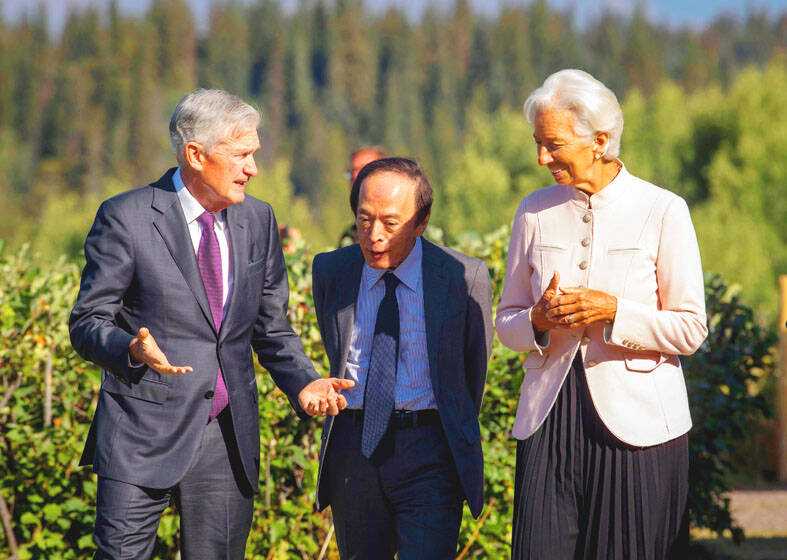-
AP, JACKSON HOLE, Wyoming
A jump in the share of foreign-born workers after the COVID-19 pandemic helped Europe bring inflation down without sharply slower growth, European Central Bank (ECB) President Christine Lagarde said on Saturday.
A key factor “has been the rise in both the number and participation rate of foreign workers,” Lagarde said in a speech in Jackson Hole, Wyoming, at a US Federal Reserve economic symposium. “In Germany, for example, GDP would be around 6 percent lower than in 2019 without the contribution of foreign workers.”
Spain’s strong post-COVID-19 pandemic economic growth “also owes much to the contribution of foreign labor,” she said.

Photo: AP
Lagarde’s remarks echoed a common view among economists that an influx of foreign workers helped companies expand their output and meet a spike in demand after the pandemic that followed stimulus benefits.
The increased supply helped bring down inflation in Europe and the US. Yet the rise in immigration also sparked a political backlash in both economies.
“Migration could, in principle, play a crucial role in easing” labor shortages as native populations age, Lagarde said, but “political economy pressures may increasingly limit inflows.”
Lagarde also said that a drop in inflation-adjusted wages, greater hoarding of workers by companies, and an influx of elderly people into the labor force also contributed to steady economic growth even as the ECB lifted interest rates.
Historically, higher borrowing costs have dragged down economic growth, often causing recessions and leading to higher unemployment. Yet that did not happen as the ECB raised its key rate in 2022 and 2023, she said.
While foreign-born workers accounted for just 9 percent of the EU’s labor force in 2022, they have made up half of the bloc’s labor force growth in the past three years, Lagarde said.
More elderly people also joined the workforce, Lagarde said. Without that increase, the unemployment rate in the 20 countries that use the euro would be elevated — 6.6 percent, rather than the current rate of 6.3 percent, she said.
Bank of Japan Governor Kazuo Ueda spoke on the same panel at Jackson Hole and cited a similar trend in Japan since the pandemic.
While the foreign-born make up just 3 percent of the workforce, they have made up half of recent workforce growth, he said.
Japan’s population dropped for a 14th straight year last year, Japanese Ministry of Internal Affairs and Communications data showed. Japan also has one of the oldest populations in the world, with almost 30 percent of residents aged 65 or older.